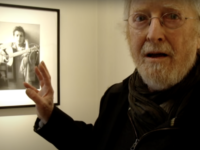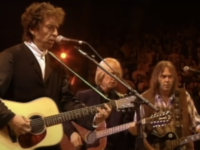Sometimes you need to listen to a song many times before you really hear it. I know I’d listened to Bob Dylan’s “Tangled Up in Blue” hundreds of times when I walked down Madrid’s Gran Via on a recent morning with Blood on the Tracks on — and the full glory of Dylan’s song of endings and new beginnings finally hit me.
Bruce Springsteen famously said that the opening snare shot of “Like a Rolling Stone” was like somebody kicking open a door to your mind. The effect of “Tangled Up in Blue” is similar: it kicks open a door to your heart. It’s for Dylan’s Seventies what “Like a Rolling Stone” was for his Sixties: a farewell note to the past that’s at once the preface of a new beginning.
To my mind, “Tangled Up in Blue” is the more mature and profound song of the two, even if it clearly wasn’t as revolutionary. The Dylan of 1975’s Blood on the Tracks sounds wiser and in fuller command of his art to me, without losing any of his piercing poetry or unforgettable vocals. But the vitriolic anger of “Like a Rolling Stone” has dissipated in “Tangled up in Blue,” and made place for a more understanding vision of life and the necessity of change.
“But me, I’m still on the road,” he sings in the final verse, evoking the ghost of Jack Kerouac. Just as Kerouac’s novel told of the passing of the Beat Generation, Dylan’s song tells of the passing of the Sixties. “Tangled Up in Blue” is Dylan’s way of rewriting Kerouac’s novel, passing beyond the melancholy bitterness that Kerouac’s road led to. “I wrote the book because we’re all going to die,” Kerouac once said before a reading of On the Road — a book that is, ultimately, about his heroic but futile attempts to outrun death and decay, and the ensuing sadness and bitterness that drowned him (along with a healthy dose of alcohol).
Bob Dylan could have arrived at the same conclusion in his song of the road. Yet, he didn’t. Like On the Road, “Tangled Up in Blue” is about partings, lost friends, lost lovers, lost time. It’s a song about wandering and regret and loneliness. But in the end Dylan’s indomitable spirit and creativity overcome it all, singing with a voice filled with strength and hard-earned wisdom, to a rhythm that leaves no doubt that the road goes on, no matter how much has been lost.
And anyway, what does it matter that we’re all going to die when you can wake up one morning and walk down the Gran Via in Madrid — or any other road — with the sun in your eyes … and Bob Dylan singing his never-ending song of the road?
- Why Warren Zevon Shouldn’t Only Be Remembered For a Novelty Single - September 7, 2023
- Thanksgiving Songs From Bob Dylan, Joan Baez + Others: Gimme Five - November 25, 2021
- Dory Previn, “The Lady With the Braid” (1971): One Track Mind - November 27, 2019




